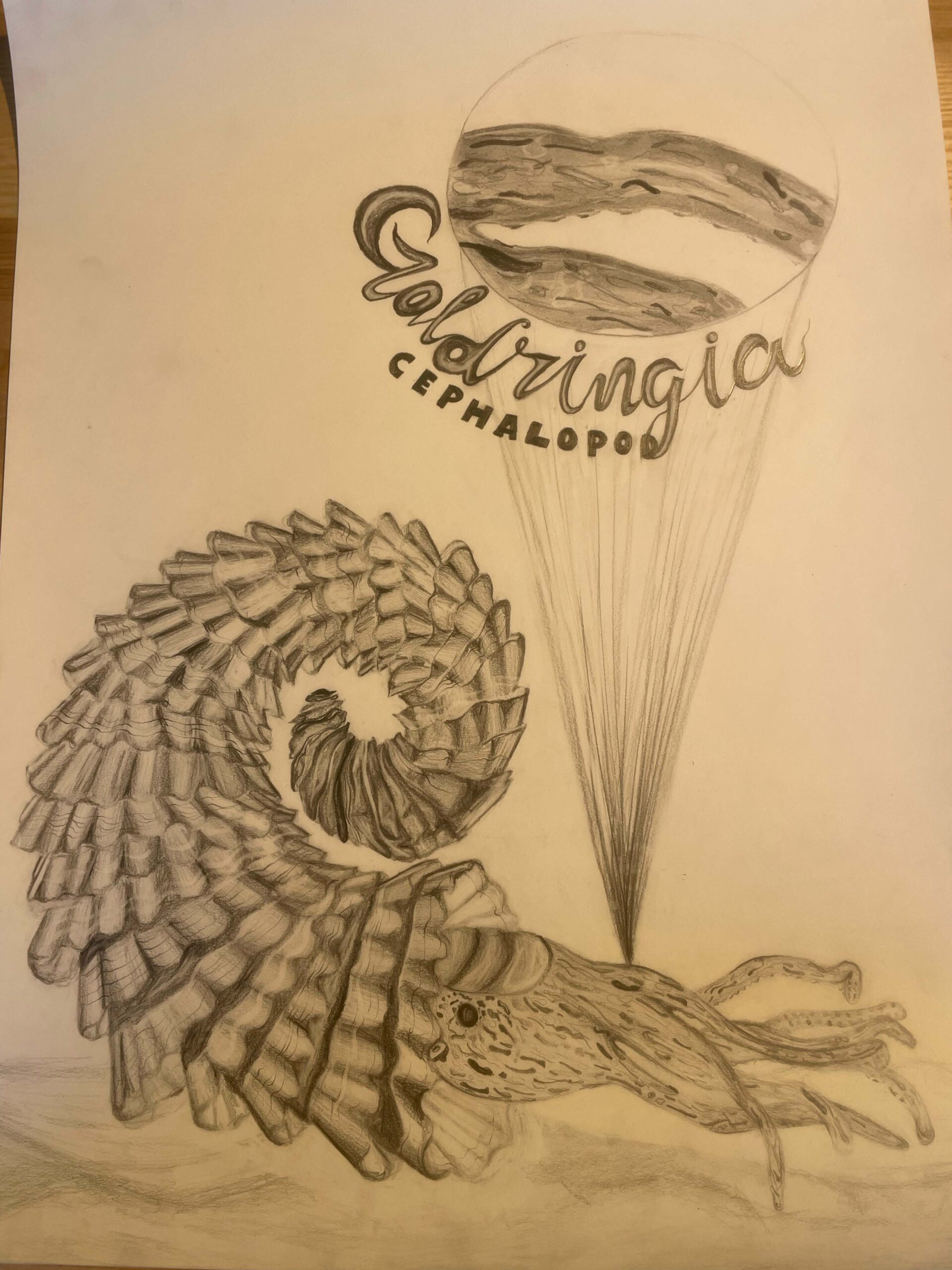The Goldringia
Ava Istamboulian
1st Year, Stamps School of Art & Design
1st Year, Stamps School of Art & Design

Medium
Graphite
Abstract
A few highlights of my graphite drawing titled The Goldringia include a few details that are not noticed at first glance. Since its shape resembles The Golden Ratio, each layer is drawn with an attention to the individual shells and coils wrapped around. Additionally, the microscopic zoom in further emphasizes the scientific depictions within the drawing that were intentionally chosen. The font contributes to this idea as well, with the scientific and general name both included under a style that represents the animal.
During my visit to The University of Michigan Natural History Museum, I had the opportunity to study the structure of several animals and draw scientific structures of them. After making my selection of which creature to draw, I decided on the goldringia, a cephalopod that is now extinct, but lived during the Middle Devonian era. Although now extinct, the squid used to roam throughout what is now New York, Indiana, and Ohio, in vast depths of the ocean. With depths ranging from 250 to 500 meters, in the twilight zone, their habitat is classified with cold temperatures and vast oceanic life. I was immediately drawn to a squid since it resembles Fiboncci’s sequence. From my perspective the swirl had the same pattern and I thought it would be interesting to work on a drawing that hints at a combination of art and mathematics while creating a scientific depiction. The more I studied the goldringia, the more I learned about its habitat and the evolution of squids today. For example, the shape of the squid follows the coil pattern the Golden Ratio does with a gyroconic shell. The whirl shaped never touches and has a layered shell that is used as a shelter and swimming purposes. To survive in the deep seas, the goldringia has a natural buoyancy and preys on crustaceans or trilobites. The long tentacles each squid bestows allow them to capture their prey or swiftly swim through harsh waters. Many scientific drawings of animals focus on the animal’s shape, scientific name, and the smaller details not usually seen at first glance. I highlighted this list throughout my heavy focus on perfecting the shape of the squid, my naturally waving font that displays both its regular and scientific name, as well as the small rings or printed pattern throughout its body/shell.
